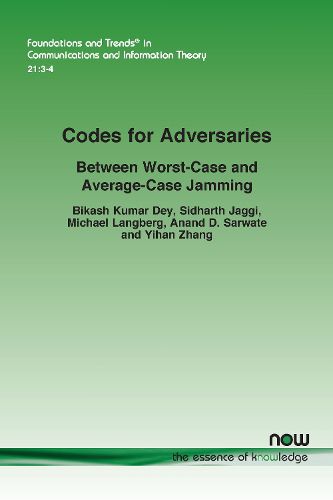Readings Newsletter
Become a Readings Member to make your shopping experience even easier.
Sign in or sign up for free!
You’re not far away from qualifying for FREE standard shipping within Australia
You’ve qualified for FREE standard shipping within Australia
The cart is loading…






This title is printed to order. This book may have been self-published. If so, we cannot guarantee the quality of the content. In the main most books will have gone through the editing process however some may not. We therefore suggest that you be aware of this before ordering this book. If in doubt check either the author or publisher’s details as we are unable to accept any returns unless they are faulty. Please contact us if you have any questions.
Over the last 70 years, information theory and coding have enabled communication technologies that have had an astounding impact on our lives. This is possible due to the match between encoding/decoding strategies and corresponding channel models. Traditional studies of channels have taken one of two extremes: Shannon-theoretic models are inherently average-case in which channel noise is governed by a memoryless stochastic process, whereas coding-theoretic (referred to as "Hamming") models take a worst-case, adversarial, view of the noise. However, for several existing and emerging communication systems, the Shannon/average-case view may be too optimistic, whereas the Hamming/worst-case view may be too pessimistic. This monograph takes up the challenge of studying adversarial channel models that lie between the Shannon and Hamming extremes.
$9.00 standard shipping within Australia
FREE standard shipping within Australia for orders over $100.00
Express & International shipping calculated at checkout
This title is printed to order. This book may have been self-published. If so, we cannot guarantee the quality of the content. In the main most books will have gone through the editing process however some may not. We therefore suggest that you be aware of this before ordering this book. If in doubt check either the author or publisher’s details as we are unable to accept any returns unless they are faulty. Please contact us if you have any questions.
Over the last 70 years, information theory and coding have enabled communication technologies that have had an astounding impact on our lives. This is possible due to the match between encoding/decoding strategies and corresponding channel models. Traditional studies of channels have taken one of two extremes: Shannon-theoretic models are inherently average-case in which channel noise is governed by a memoryless stochastic process, whereas coding-theoretic (referred to as "Hamming") models take a worst-case, adversarial, view of the noise. However, for several existing and emerging communication systems, the Shannon/average-case view may be too optimistic, whereas the Hamming/worst-case view may be too pessimistic. This monograph takes up the challenge of studying adversarial channel models that lie between the Shannon and Hamming extremes.